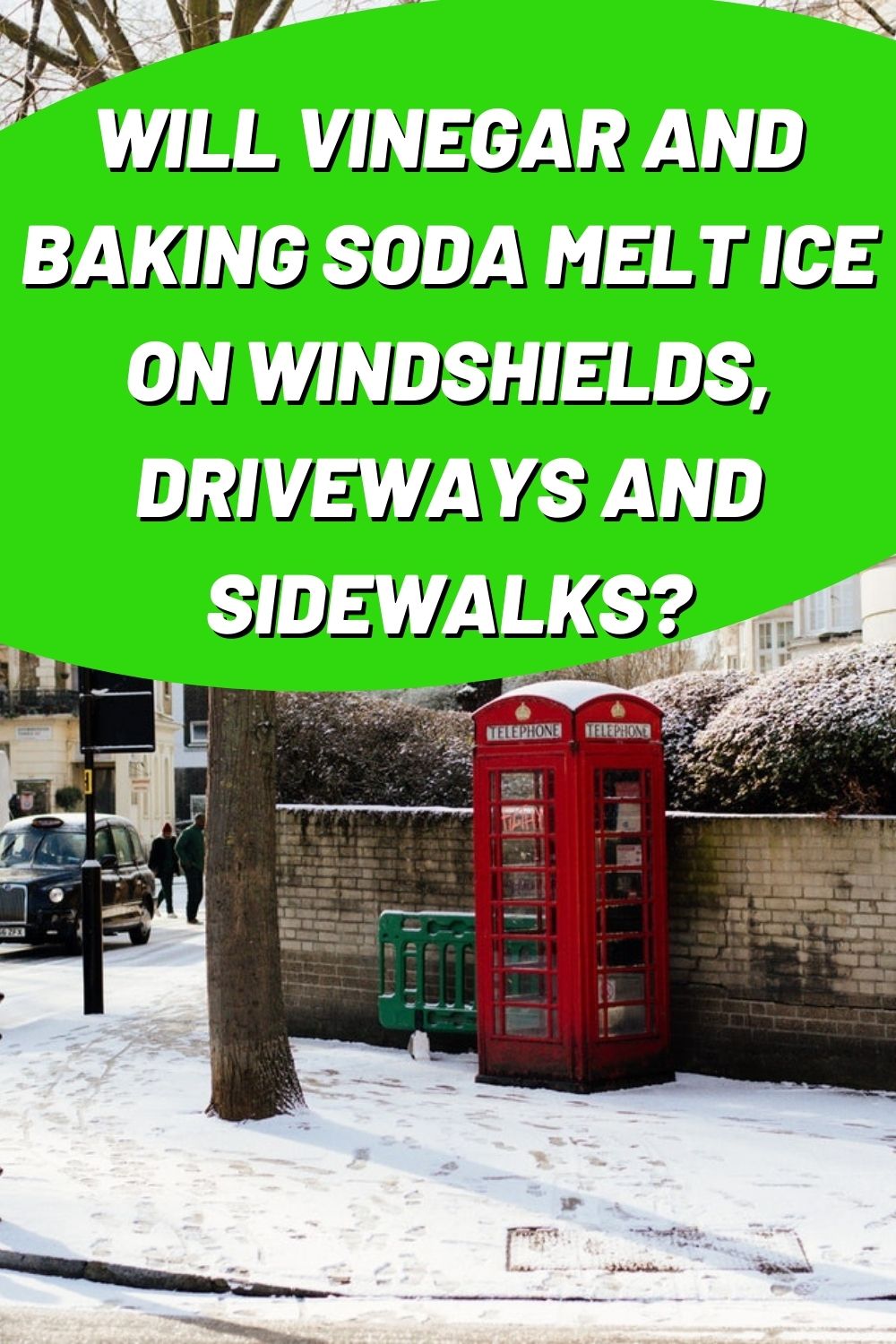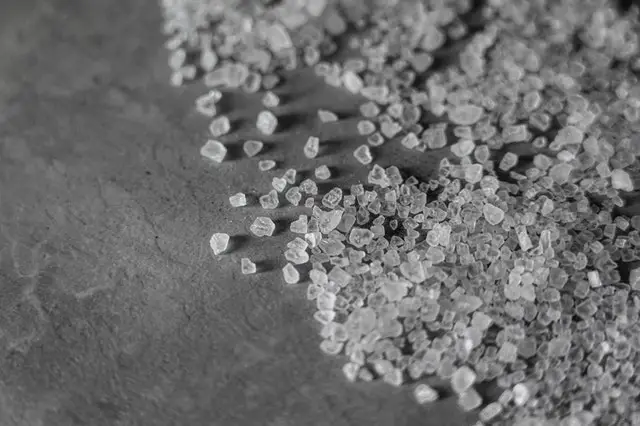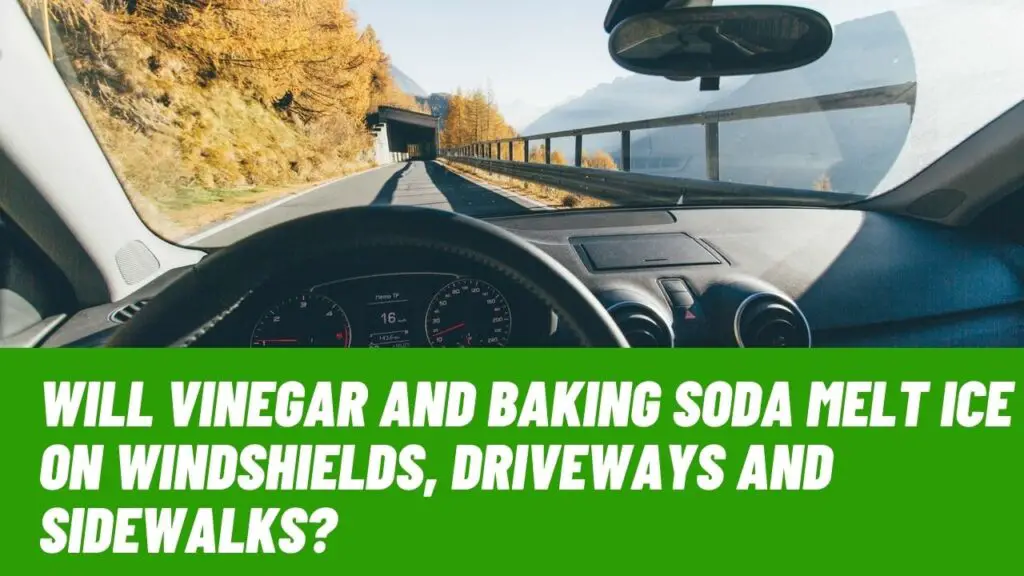In the middle of a hot summer, it’s hard to imagine that the weather would ever get cold enough for snow. But only months later, the temperatures drop – and just like that, you’ve got snow.
With snow comes ice, which is particularly tricky and dangerous to deal with. Whether you’re trying to find a natural way to melt ice on your windshields, driveways or front drive, you may have heard that vinegar or baking soda work particularly well. Is this claim actually true?
Vinegar for Melting Ice


Let’s look at vinegar first. When mixed with water, vinegar is said to melt ice so effectively that you don’t need to do any scraping. Sounds too good to be true – but vinegar actually works quite well in this respect.
The claims aren’t quite accurate, however, as to get the real ice-melting benefits of vinegar, you should actually pour it onto a surface the night before ice is expected. This is because vinegar contains acetic acid, which reduces water’s melting point. Ultimately, this can prevent water from freezing over on your surfaces.
To use vinegar to melt ice, mix 2/3 cup vinegar with 1/3 cup water. Make sure the water is warm, not hot, if you’re using it on a glass surface. Gently pour the solution onto the surface and leave it overnight. The next morning, you should have a far smaller ice problem to deal with, if anything at all.
If you’re trying to use vinegar on a frozen surface in the morning, the vinegar-water solution may be effective in loosening the ice somewhat, but by that time, you may as well have just scraped the ice off the surface.
Baking Soda for Melting Ice


Because baking soda is a type of sodium, or salt, it’s also capable of lowering water’s freezing point. This makes it ideal as an ice pre-treatment, whether used alongside vinegar or sprinkled on the surface on its own. It can also speed up the ice melting process.
Calcium chloride is one of the most popular salts used for melting ice, but this is very alkaline and can corrode concrete and bricks over time. Baking soda is a kinder, less alkaline formula, and tends to be the least abrasive option of the two. Plus, the price of baking soda doesn’t spike in the winter like the price of calcium chloride does, so you’ll get a better value for money if you bulk-buy.
As with vinegar, baking soda isn’t an instant ice melting solution. It’ll still take up to 10 minutes to melt an icy surface, so if you’re looking to melt ice on a car windshield, your waiting time may as well be spent just scraping the ice off yourself.


Other Homemade Ice Melts
Baking soda and vinegar aren’t the only products that can be used to melt ice. Other effective homemade ice melts include:
Sand, kitty litter, or bird seed.
These items are less effective at melting ice, but they play an important role in preventing accidents. When the ice melts, these ingredients will stick around, making it easy to get a grip on slippery surfaces.
Rock salt, vinegar and water.


Salt and vinegar might be a classic chip combination, but they can be used for more than just adding flavour to savoury foods. Rock salt is one of the most effective ingredients for melting ice, and, as we already know, vinegar has its own ice-melting benefits. For this recipe, just add warm water to a bucket and pour in one cup of vinegar.
Next, dissolve in the rock salt crystals, stirring until you can no longer see them. Pour the solution into a spray bottle and spray all over the snowy or icy spots in your driveway. The force of the sprayer should help the formula penetrate through the snow and ice and speed up melting.
Wood ash, white vinegar and water.
Here’s another vinegar combination that helps melt ice – and, as a bonus, is also good for plant health. You’ll need a fireplace with plenty of spare wood ash for this. Collect 2 cups of wood ash, then add to a gallon of water and leave to combine overnight.
The next morning, fish out any floating sediment and pour the solution into another bucket. Leave behind the sediment at the bottom of the bucket. Pour in 2 cups of white vinegar, then add to a spray bottle and shake well. Spray onto your frozen surfaces to melt ice and prevent a build-up of new ice or snow.
In the majority of cases, it’s best to prevent an ice problem in the first place, rather than try and melt existing ice. Whether you’re using vinegar, baking soda, water, salt, wood ash, or a combination of them all, acting in advance will save hours of scraping and ice clearing the following morning.

